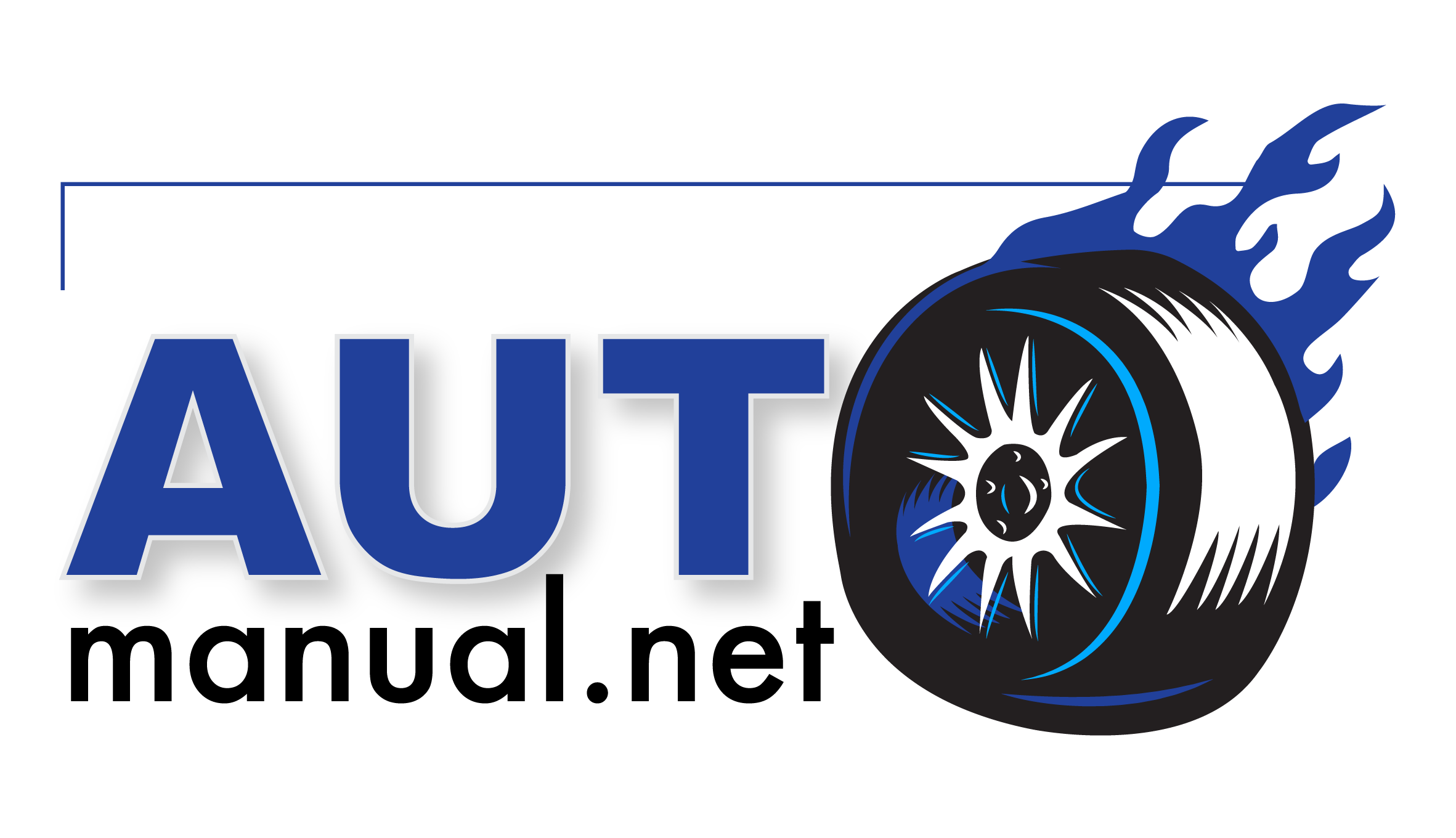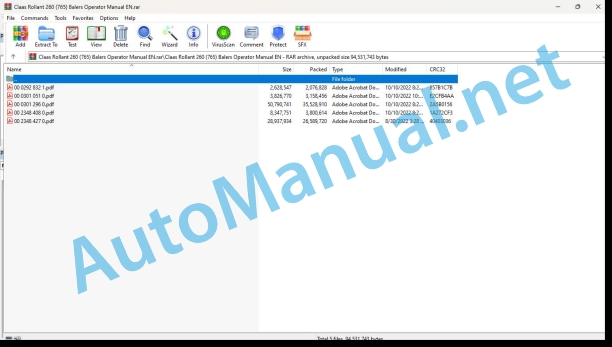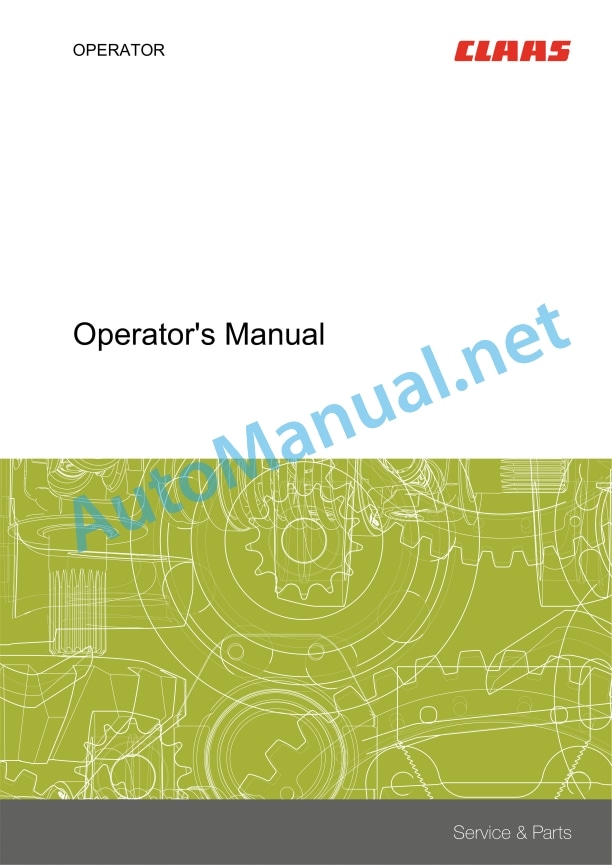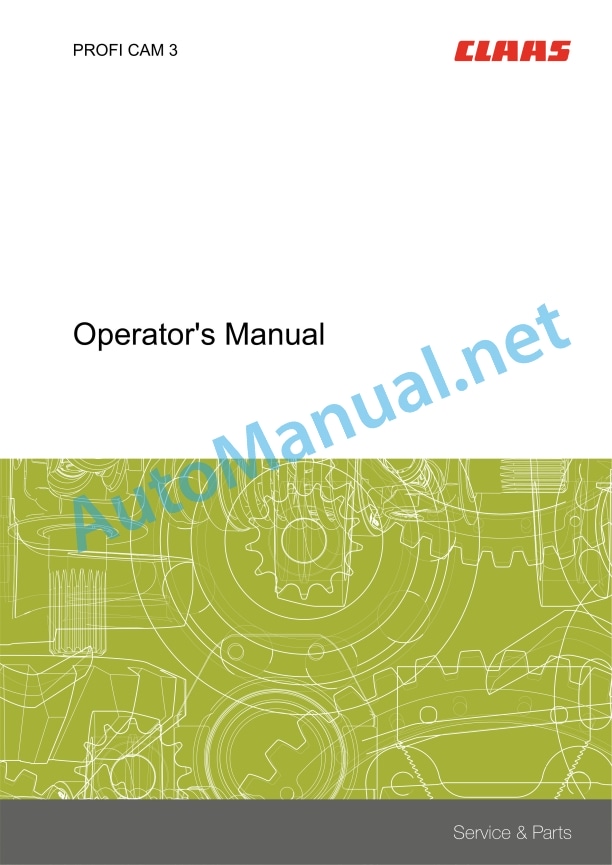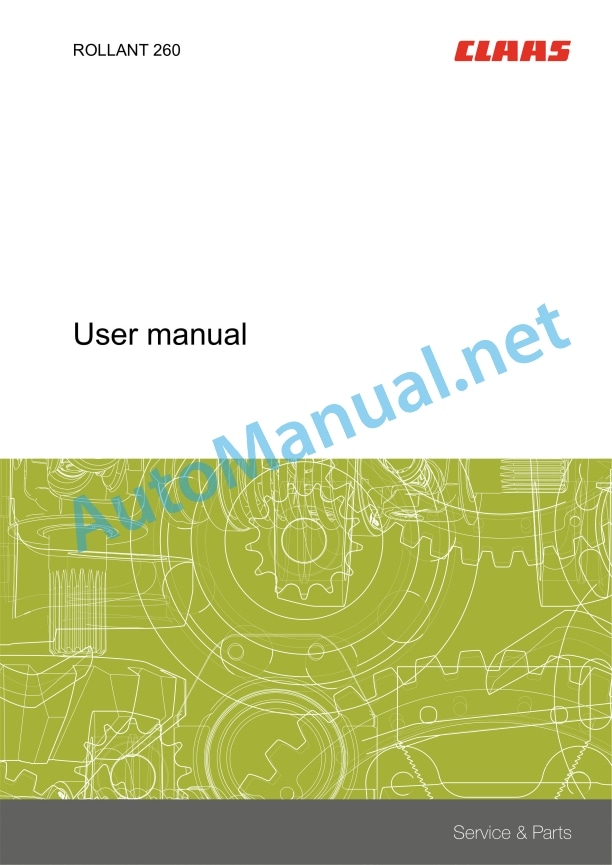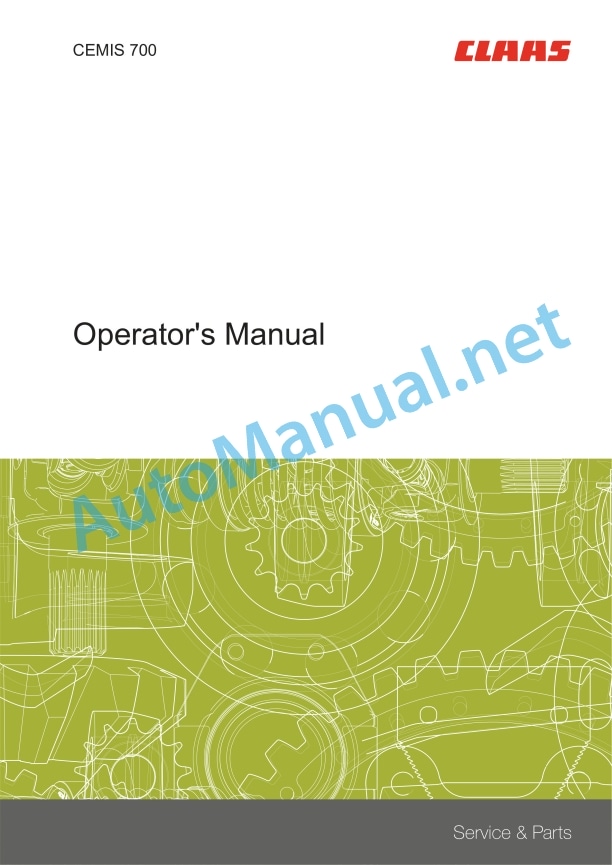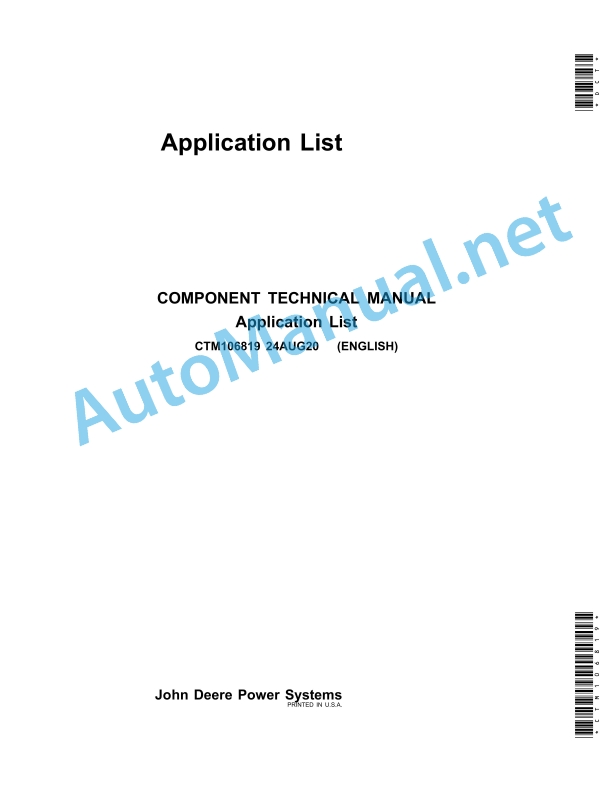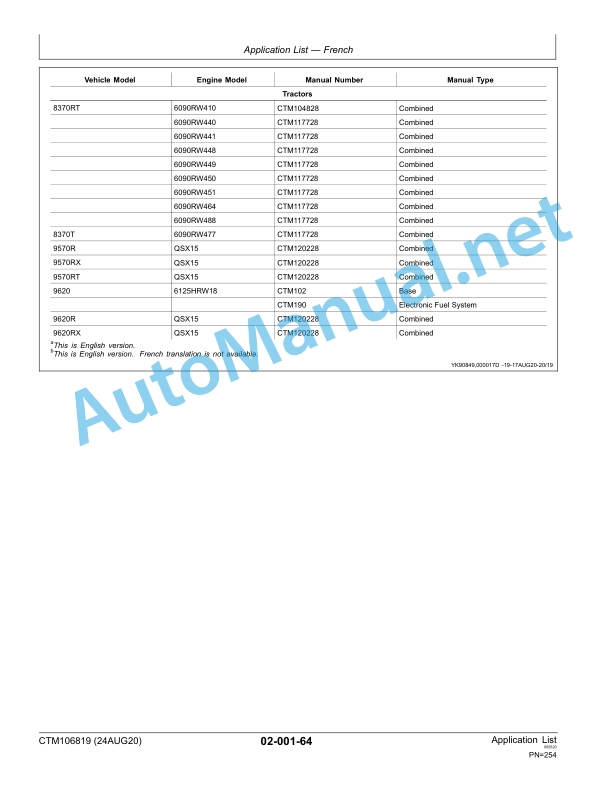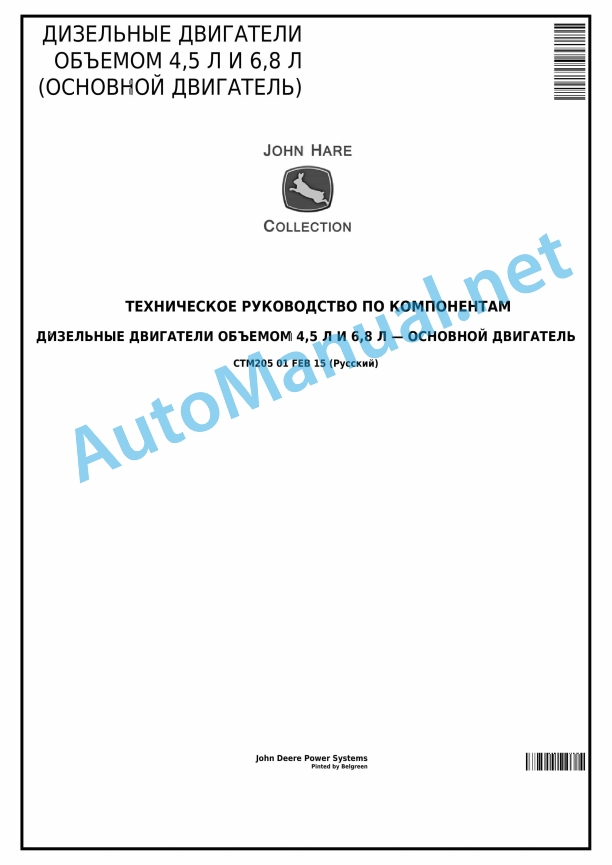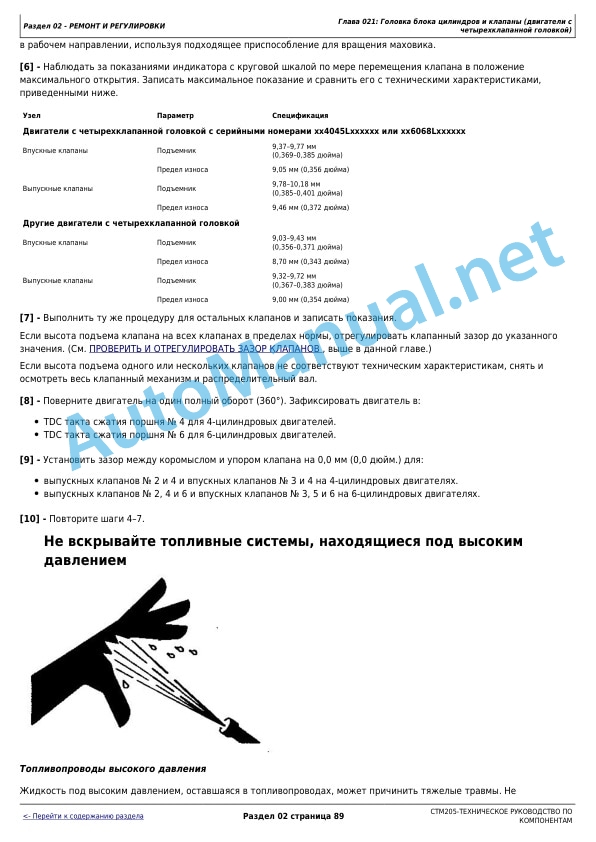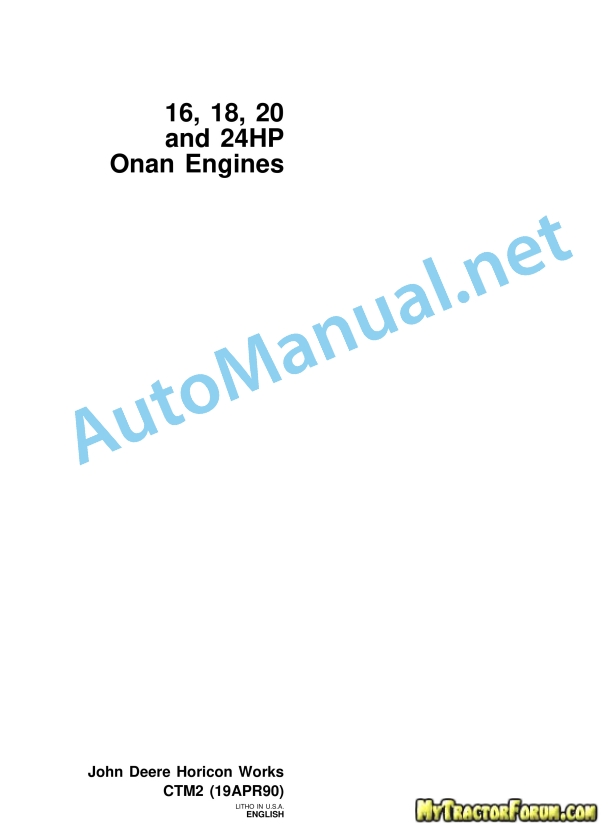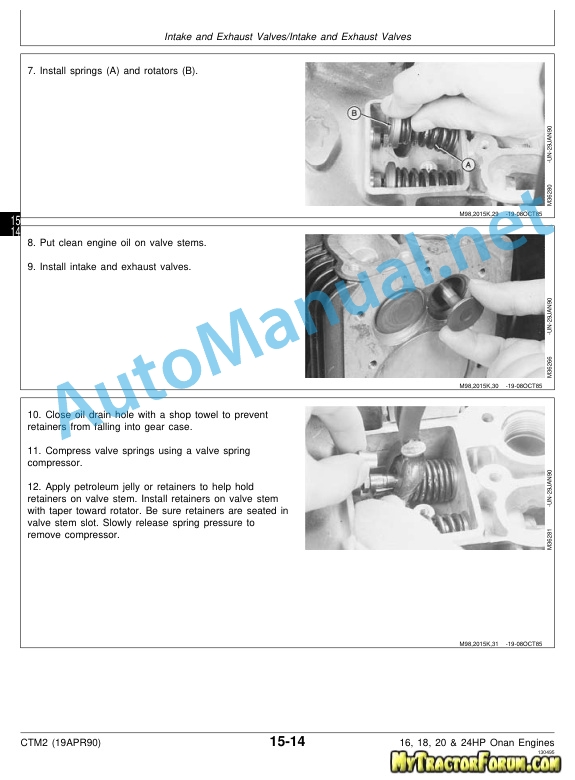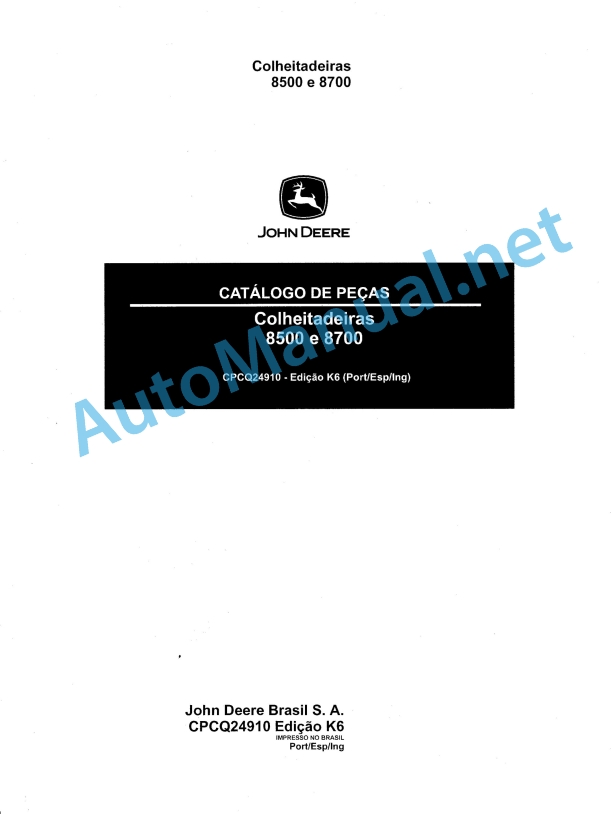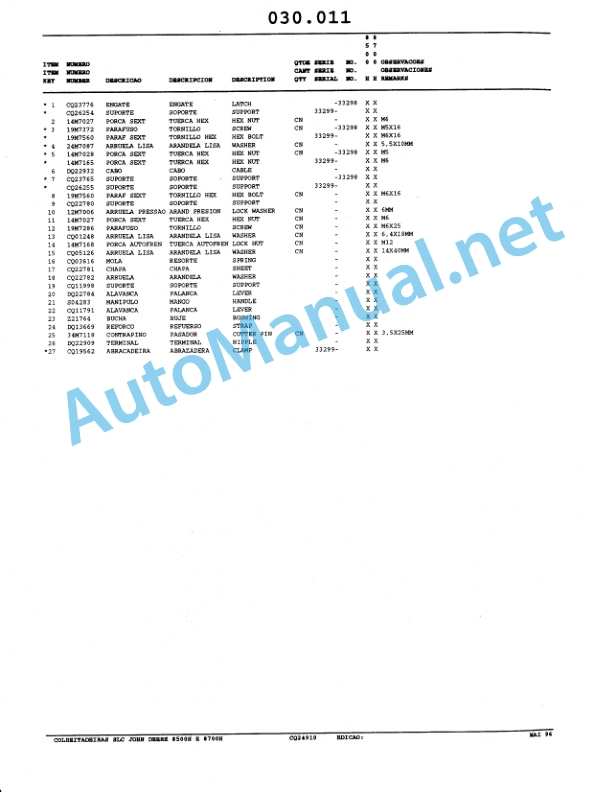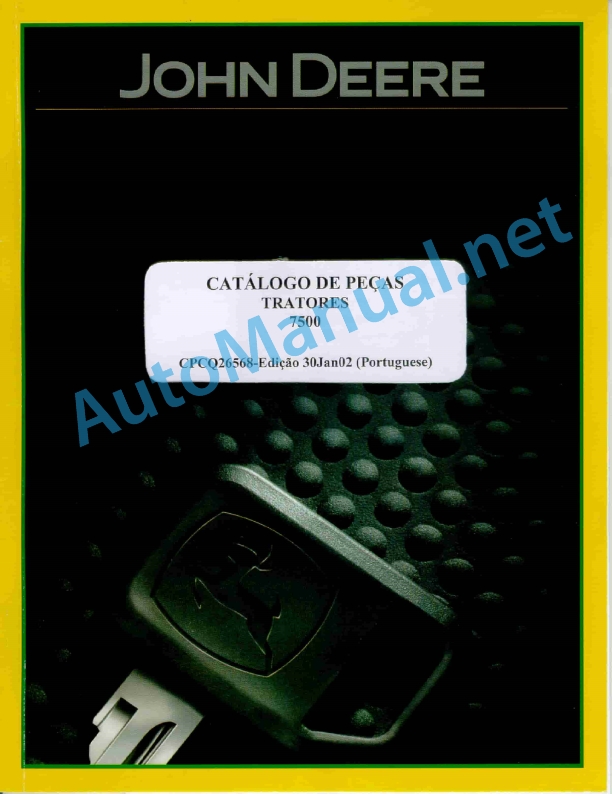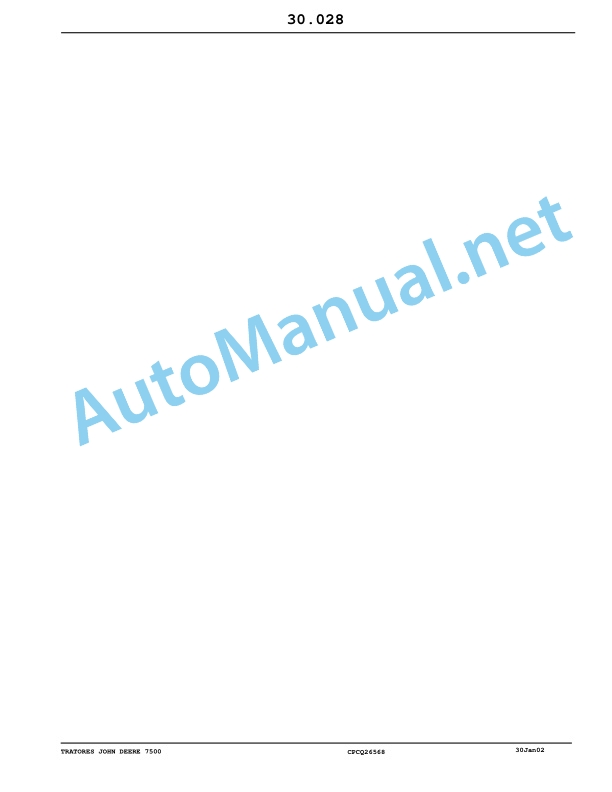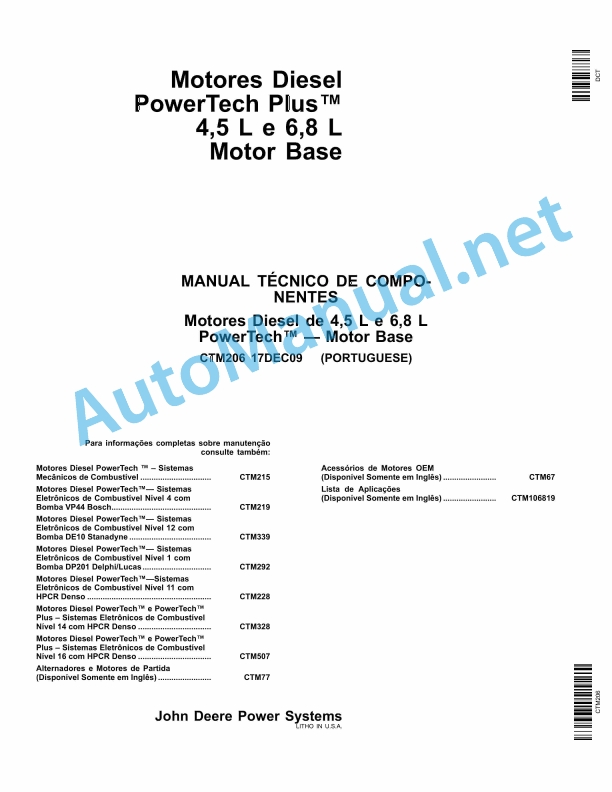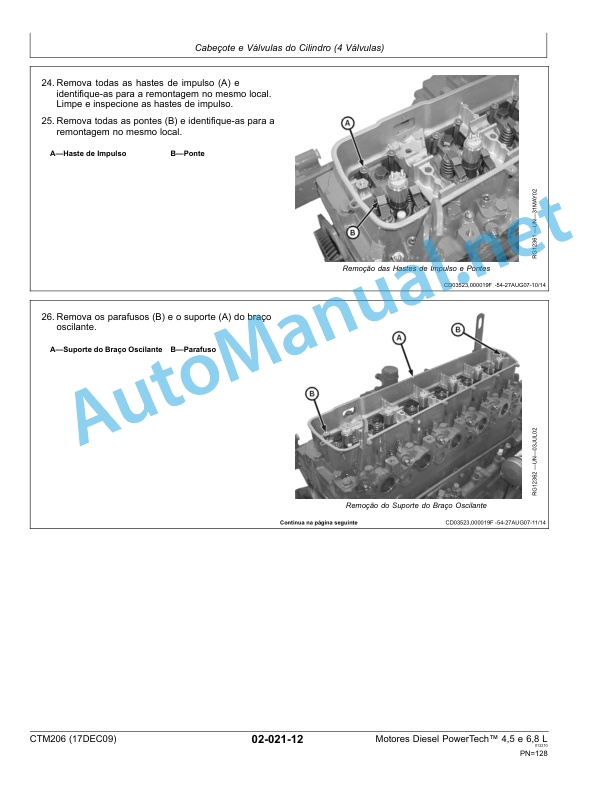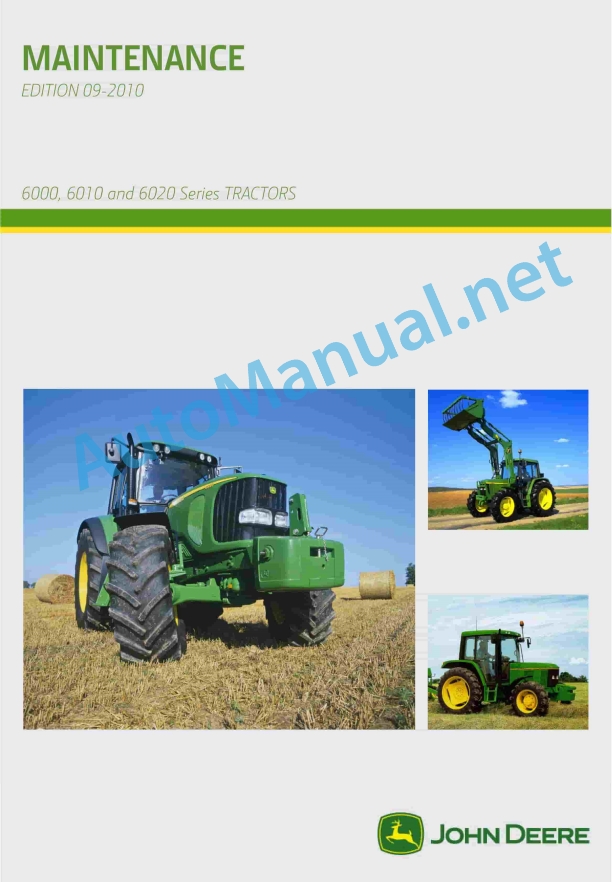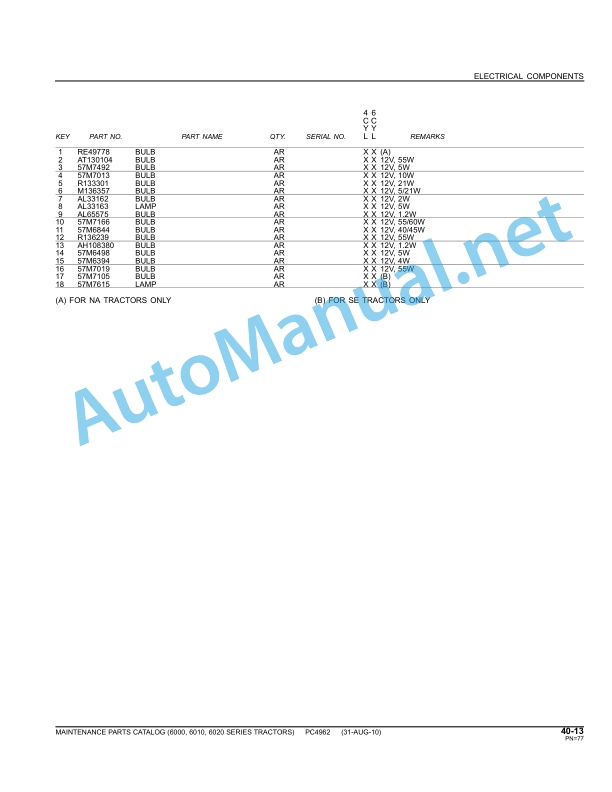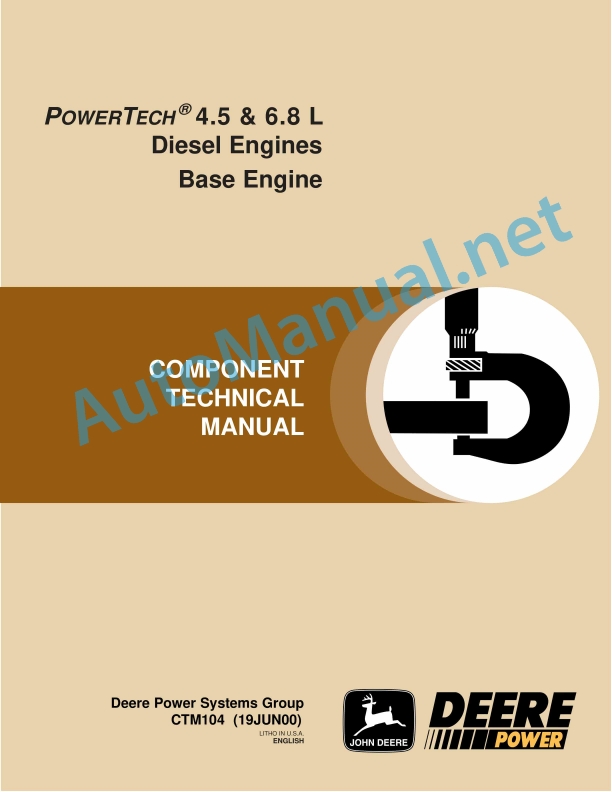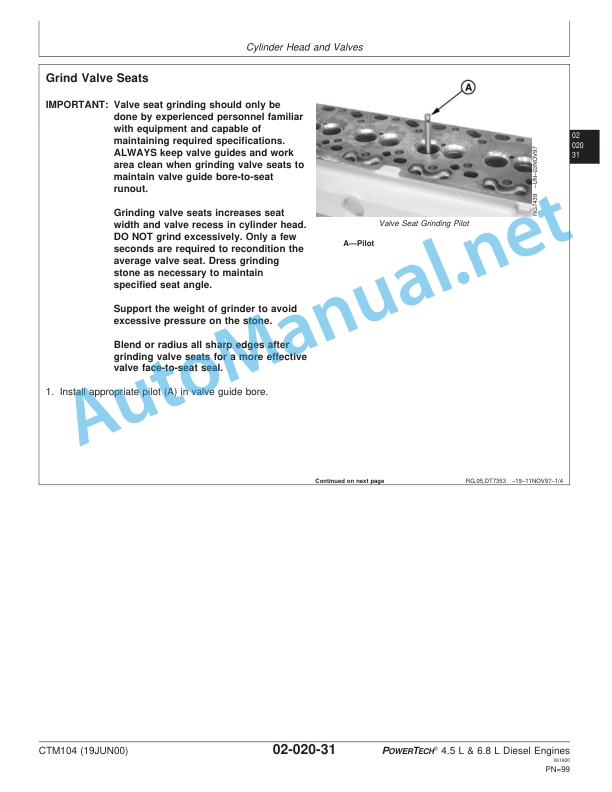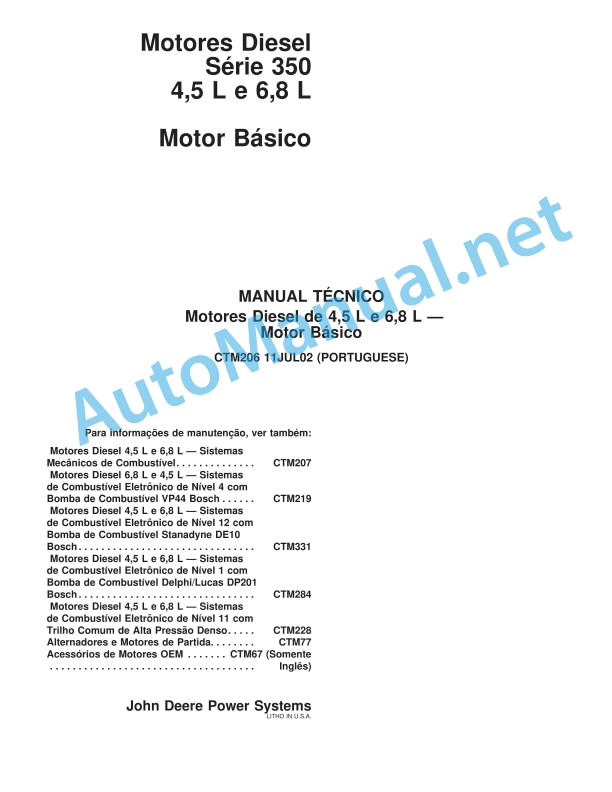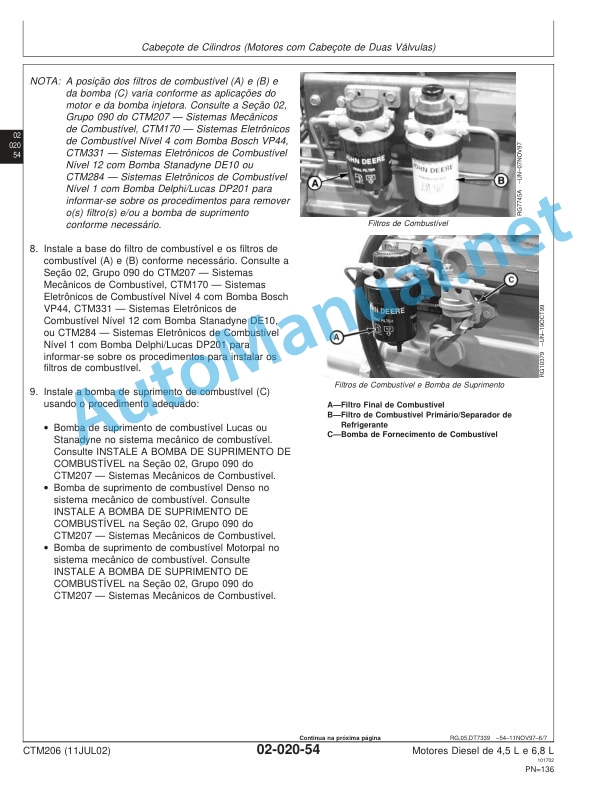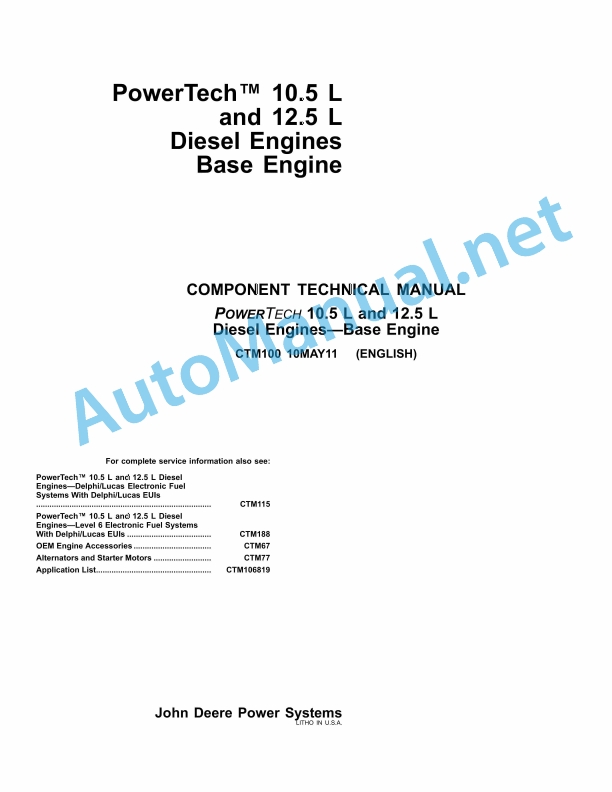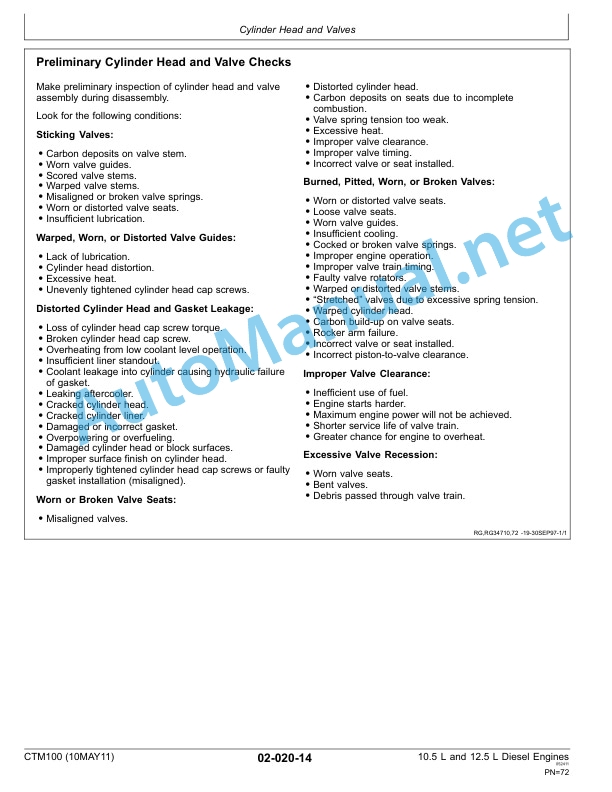Claas Rollant 260 (765) Balers Operator Manual EN
$50.00
- Model: Rollant 260 (765) Balers
- Type Of Manual: Operator Manual
- Language: EN
- Format: PDF(s)
- Size: 67.9 MB
File List:
00 0292 832 1.pdf
00 0301 051 0.pdf
00 0301 296 0.pdf
00 2348 408 0.pdf
00 2348 427 0.pdf
00 0292 832 1.pdf:
OPERATOR
Table of contents
1 To this Operator’s Manual
1.1 Notes on the manual
1.1.1 Validity of the manual
1.1.2 Using the manual
1.1.3 Symbols and notes
1.1.4 Technical specifications
2 Safety
2.1 Safety rules
2.1.1 Particularly important
2.1.2 Intended use
2.1.3 Reasonably foreseeable misuse
2.1.4 General safety and accident prevention regulations
3 Product description
3.1 Overview and method of operation
3.1.1 OPERATOR overview
3.1.2 OPERATOR mode of operation
3.2 Identification plates and identification numbers
3.2.1 Spare parts and technical questions
3.2.2 OPERATOR identification plate
4 Operating and display elements
4.1 CLAAS OPERATOR
4.1.1 Terminal
4.1.2 Terminal program
4.1.3 Menu overview
4.1.4 Information menu
4.1.5 Settings menu
4.1.6 Time menu
4.1.7 Diagnosis menu
4.1.8 Language and units menu
5 Technical specifications
5.1 CLAAS OPERATOR
5.1.1 Specification
6 Operation
6.1 Switching the OPERATOR on and off
6.1.1 Switching on the OPERATOR
6.1.2 Selecting an application
6.1.3 Switching off the OPERATOR
6.2 Terminal settings
6.2.1 Adjusting the screen and volume
Day mode
Night mode
6.2.2 Adjusting the date and time
6.2.3 Displaying the diagnosis information
On-board voltage display (1)
Enabling the speed signal (2)
Displaying the CLAAS ISOBUS ECU address and name (3)
6.2.4 Setting the language and display formats
Setting the language
Setting the display formats
7 Maintenance
7.1 Maintenance
7.1.1 Daily
8 Putting out of operation and disposal
8.1 General information
8.1.1 Putting out of operation and disposal
9 Technical terms and abbreviations
9.1 Terms and explanations
9.1.1 Technical words
9.1.2 Abbreviations
00 0301 051 0.pdf:
PROFI CAM 3
Table of contents
1 Introduction
1.1 Notes on the manual
1.1.1 Validity of manual
1.1.2 Information about this Operator’s Manual
1.1.3 Symbols and notes
1.1.4 Optional equipment
1.1.5 Qualified specialist workshop
1.1.6 Maintenance information
1.1.7 Warranty notes
1.1.8 Spare parts and technical questions
1.2 Intended use
1.2.1 Intended use
1.2.2 Reasonably foreseeable misuse
2 Safety
2.1 Identifying warnings
2.1.1 Hazard signs
2.1.2 Signal word
2.2 Safety rules
2.2.1 Meaning of Operator’s Manual
2.2.2 Observing safety decals and warnings
2.2.3 Optional equipment and spare parts
3 Product description
3.1 Overview and method of operation
3.1.1 How the PROFI CAM works
3.2 Identification plates and identification number
3.2.1 Position of identification plates
3.2.2 Explanation of PROFI CAM identification plate
3.3 Information on the product
3.3.1 CE marking
4 Operating and control elements
4.1 Camera system
4.1.1 Camera system monitor
4.2 Menu structure
4.2.1 Main menu
4.2.2
4.2.3
4.2.4
4.2.5
4.2.6
5 Technical specifications
5.1 PROFI CAM
5.1.1 Monitor
5.1.2 Camera
5.1.3 Switch box
5.1.4 Degree of protection against foreign bodies and water
6 Preparing the product
6.1 Shutting down and securing the machine
6.1.1 Switching off and securing the machine
6.2 Prior to operation
6.2.1 Carry out prior to operation
6.2.2 Installing the sun protection
6.2.3 Aligning the camera
6.2.4 Connecting the camera electrics
7 Operation
7.1 Monitor
7.1.1 Switching on the monitor
7.1.2 Calling up the menu
7.1.3 Setting a menu item
7.1.4 Setting the image orientation
7.1.5 Setting automatic screen darkening
7.1.6 Image mirroring
7.1.7 Setting the trigger view
7.1.8 Setting the follow-up time for trigger view
7.1.9 Setting the display mode
7.1.10 Activating/deactivating a display mode
8 Faults and remedies
8.1 Electrical and electronic system
8.1.1 Overview of problems on PROFI CAM camera system
8.1.2 Replacing the switch box fuse
9 Maintenance
9.1 Maintenance intervals
9.1.1 Every 10 operating hours or daily
9.2 Camera system
9.2.1 Checking the camera system for dirt
9.2.2 Cleaning the camera
9.2.3 Cleaning the switch box
9.2.4 Cleaning the monitor
10 Placing out of operation and disposal
10.1 General Information
10.1.1 Putting out of operation and disposal
11 Technical terms and abbreviations
11.1 Abbreviations
11.1.1 Units
11.1.2 Abbreviations
11.1.3 Technical terms
00 0301 296 0.pdf:
ROLLANT 260
Table of contents
1 To this Operator’s Manual
1.1 General information
1.1.1 Manual validity
1.1.2 Technical specifications
1.1.3 Symbols and notes
1.1.4 Using the manual
2 Safety
2.1 General information
2.1.1 General points
2.1.2 Using in line with intended usage
2.1.3 Reasonably foreseeable improper usage
2.1.4 Safety advice
2.1.5 Definition of hazard information
2.1.6 Driving on the road
2.1.7 Accident prevention
2.1.8 Waste disposal
2.1.9 Residual risks
2.2 Safety decals
2.2.1 Description
2.2.2 Location of safety stickers
2.3 Safety equipment
2.3.1 Indicator lights
2.3.2 Reflective equipment
2.3.3 Jack stand
2.3.4 Chocks
2.3.5 Retaining cable (machine not equipped with brake and which can be used in France)
2.3.6 Tailgate safety lever
3 Machine description
3.1 Overview and functions
3.1.1 Left-hand side
3.1.2 Right-hand side
3.2 Working and service areas
3.2.1 General points
3.2.2 Upper section of the baler
3.3 Identification plate and serial number
3.3.1 Replacement parts and technical information
3.3.2 Position of identification plates
3.3.3 Machine identification plate
3.3.4 Drawbar identification plate
3.4 General operating principle
3.4.1 Baling cycle
3.5 Control terminal
3.5.1 Control terminal
3.5.2 ISOBUS connection
3.6 Transmission and drive
3.6.1 Transmission
3.6.2 Drive
3.6.3 Pick-up and feed rake drive
3.6.4 Drive chains
3.7 Crop feeding
3.7.1 Pick-up
3.7.2 Crop guard
3.7.3 Short crop plate
3.8 Feeder unit
3.8.1 Feed rake
3.9 Baling system
3.9.1 Bale chamber and rollers
3.9.2 Baling cycle
3.10 Tying system
3.10.1 Tying types and processes
3.10.2 Tying setting
3.10.3 Twine/net box
3.10.4 Net box
3.11 Bale discharge
3.11.1 Bale ramp*
Use without the bale ramp
3.12 Central lubrication
3.12.1 Automatic chain lubrication
3.13 Hydraulic system
3.13.1 Baler hydraulic block
3.13.2 Pressure switch
3.14 Equipment
3.14.1 Ladder
3.14.2 Step
3.14.3 Electronic module
3.14.4 Pressure gauge
3.14.5 Mechanical counter
4 Operating and control elements
4.1 CLAAS STANDARD TERMINAL
4.1.1 Presentation
4.1.2 Key identification
4.1.3 Introduction to the displays
4.2 OPERATOR
4.2.1 Presentation
4.2.2 Description of the OPERATOR menus
4.3 ISOBUS terminal
4.3.1 Presentation
4.3.2 General points
5 Technical specifications
5.1 Baler
5.1.1 General points
5.1.2 Dimensions
5.1.3 Weight
5.1.4 Hitching
5.1.5 Universal drive shaft
5.1.6 Feeding and baling
5.1.7 Tying device
5.1.8 Wheels
5.1.9 Hydraulic circuit
5.1.10 Bolt tightening torques
5.1.11 Greasing and lubrication
5.1.12 Noise level
5.2 Safety devices
5.2.1 Shear bolts
5.2.2 Torque limiters
5.3 Tractor
5.3.1 Power required
5.3.2 Power take-off
5.3.3 Hitching
5.3.4 Electrical connections
5.3.5 Hydraulic connections
5.3.6 Hydraulic oil and circuit
6 Machine preparation
6.1 General information
6.1.1 Before first use
6.2 Axle
6.2.1 Axle width adjustment
6.3 Universal drive shaft
6.3.1 Safety advice
6.3.2 Overlap of the universal drive shaft
6.3.3 Adapting the length of the universal drive shaft
6.3.4 Conversion kit – 8 splines*
6.3.5 Fitting the universal drive shaft
6.4 Coupling frame
6.4.1 Recommendations
6.4.2 Coupling types
6.4.3 Adapting jaw drawbar/swinging drawbar
6.4.4 Fitting the universal drive shaft
6.5 Hydraulic connections
6.5.1 Identifying the hydraulic hoses
6.5.2 Connections to the tractor’s double action control valves
6.6 Electrical connections
6.6.1 Identifying the electrical cables
6.6.2 Lighting
6.6.3 Battery cable*
6.6.4 Power supply for the baler and the CLAAS Standard Terminal*
6.6.5 Power supply for the baler and the OPERATOR*
6.6.6 Electrical supply for the baler using the ISOBUS cable
6.7 Roller deflectors
6.7.1 Description
6.7.2 Use
6.7.3 Removal/refitting of deflectors
6.8 Twine tying
6.8.1 Twine quality
6.8.2 Preparation
6.8.3 Adjusting the twine tensioner
6.8.4 Fitting the twine
6.8.5 Selecting twine tying*
6.9 Net tying
6.9.1 Preparation
6.9.2 Fitting the net
6.9.3 Adjusting the net brake
6.9.4 Selecting net tying*
6.10 Bale discharge
6.10.1 Fitting the bale ramp
6.11 Loading the machine
6.11.1 Lifting
6.11.2 Lashing the baler
7 Operation
7.1 General information
7.1.1 Baler user
7.1.2 Opening the doors and housings
7.2 Travelling with the baler
7.2.1 Checking the equipment
7.2.2 Preparing for transportation
7.2.3 Travelling on the road
7.2.4 Arriving at the field
7.2.5 Driving in fields
7.2.6 Parking
7.3 Before each usage
7.3.1 Reminders
7.3.2 Universal drive shaft
7.3.3 Baler maintenance
7.4 Commissioning in the field
7.4.1 User advice
7.4.2 Starting the machine
7.5 Specific use
7.5.1 Twine tying – Use in wilted silage
7.5.2 Net tying
7.6 Pick-up
7.6.1 Important
7.6.2 Pick-up height
7.7 Tying
7.7.1 Selecting twine tying or net tying*
7.7.2 Setting the number of twine wraps
7.7.3 Setting the number of net wraps
7.8 Bale parameters
7.8.1 Bale settings
7.9 CLAAS STANDARD TERMINAL
7.9.1 Selecting the tying type*
7.9.2 Setting the Twine tying delay
7.9.3 Setting the Net tying delay
7.9.4 Baling/tying process
Special case
Use without the bale ramp
7.9.5 Manually activating the tying process
7.9.6 Manually delaying the tying process[according to the structure of head above]
7.9.7 Faults
7.10 OPERATOR
7.10.1 Counters Menu
7.10.2 Selecting twine tying or net tying*
7.10.3 Baling/tying process
7.10.4 Setting the twine tying start delay
7.10.5 Setting the net tying start delay
7.10.6 Manually activating the tying process
7.10.7 Manually delaying the tying process
7.10.8 Faults
7.11 ISOBUS terminal
7.11.1 General points
7.12 Unblocking the baler
7.12.1 How can blockages be avoided?
7.12.2 Safety advice
7.12.3 Unblocking the pick-up
7.12.4 Unblocking the feed rake*
7.13 After use
7.13.1 Reminders
7.13.2 Securing the baler
7.13.3 Daily checks
7.13.4 Daily cleaning
7.13.5 Unhitching the baler
8 Faults and remedies
8.1 Tying
8.1.1 Causes of tying faults
8.1.2 Twine tying
8.1.3 Net tying
8.2 Central lubrication
8.2.1 Chain lubrication
8.3 Control terminal
8.3.1 Faults displayed on the control terminal
8.3.2 Baling pressure
8.3.3 Bale discharge
8.3.4 Twine tying
9 Maintenance
9.1 General maintenance Information
9.1.1 Maintenance and safety advice
9.1.2 Wheels and tyres
9.1.3 Hydraulic circuit
9.1.4 V-belt
9.1.5 Chains
9.1.6 Baling and tying device
9.1.7 Universal drive shaft
9.1.8 Hitching
9.1.9 Safety devices
9.1.10 Bolts and nuts
9.1.11 Lubrication and greasing
9.1.12 Welding work
9.1.13 Replacement parts
9.2 Maintenance schedules
9.2.1 Maintenance operations before gathering crop
9.2.2 Maintenance operations after the first 10 hours of operation
9.2.3 Maintenance operations after the first 50 hours of operation
9.2.4 Maintenance operations every 8 hours of operation or every day
9.2.5 Maintenance operations every 50 hours of operation
9.2.6 Maintenance operations every 100 hours of operation
9.2.7 Maintenance operations every 250 hours of operation
9.2.8 Maintenance operations annually or every 500 hours of operation
9.2.9 Maintenance operations if necessary
9.3 Lubricants charts
9.3.1 Lubricants
9.4 Maintenance operations gearbox
9.4.1 Universal drive shaft shear bolt
9.4.2 Drive gearbox
9.4.3 Drive springs
9.5 Maintenance operations axle and wheels
9.5.1 Wheel hub
9.5.2 Checking the wheel tightness
9.5.3 Checking the tyres
9.6 Maintenance operations hitch
9.6.1 Hitch coupling and drawbar mounting
9.7 Maintenance operations hydraulic system
9.7.1 Hydraulic oil filter
9.8 Maintenance operations pick-up
9.8.1 Pick-up drive chains
9.8.2 Pick-up shear bolt
9.8.3 Pick-up tensioners
9.9 Maintenance operations baling chamber
9.9.1 Deflectors
9.10 Maintenance operations tying
9.10.1 Twine tying
9.10.2 Net tying
9.11 Maintenance operations bale discharge
9.11.1 Bale ramp
9.12 Maintenance operations central lubrication system
9.12.1 Chain lubrication
9.13 Lubrication chart
9.13.1 Lubrication intervals
9.13.2 Universal drive shaft
9.13.3 Lubrication points – 8 hrs
9.13.4 Lubrication points – 50 hrs
9.13.5 Lubrication points – 100 hrs
9.14 Winter storage
9.14.1 General points
9.14.2 Cleaning
9.14.3 Lubricating
9.14.4 Maintenance
9.14.5 Storage
10 Placing out of operation and disposal
10.1 General information
10.1.1 Placing out of operation and disposal
11 EC declaration of conformity
11.1 General information
11.1.1 Declaration of Conformity for EC
11.1.2 Declaration of Conformity for EC
00 2348 408 0.pdf:
CEMIS 100
Table of contents
1 Introduction
1.1 General information
1.1.1 Validity of the manual
1.1.2 Information about this Operator’s Manual
1.1.3 Symbols and notes
1.2 Intended use
1.2.1 Intended use
1.2.2 Reasonably foreseeable misuse
2 Safety
2.1 Safety rules
2.1.1 General safety and accident prevention regulations
2.1.2 Interaction between terminal and machine or tractor
2.1.3 Electrocution by electrical system
3 Product description
3.1 Overview and method of operation
3.1.1 Overview of CEMIS 100
3.1.2 Function principle of CEMIS 100
3.2 Identification plates and identification numbers
3.2.1 Spare parts and technical questions
3.2.2 Identification plate of CEMIS 100
4 Operating and display elements
4.1 CEMIS 100
4.1.1 User interface for LINER
4.1.2 User interface for ROLLANT
4.1.3 User interface for UNIWRAP
5 Technical specifications
5.1 CEMIS 100
5.1.1 Specification
6 Operation
6.1 CEMIS 100
6.1.1 Operating the CEMIS 100
6.1.2 Switching CEMIS 100 on
6.1.3 Switching CEMIS 100 off
7 Maintenance
7.1 CEMIS 100
7.1.1 Daily
8 Putting out of operation and disposal
8.1 General information
8.1.1 Removal from service and disposal
9 Technical terms and abbreviations
9.1 Terms and explanations
9.1.1 Technical words
9.1.2 Abbreviations
00 2348 427 0.pdf:
CEMIS 700
Table of contents
1 Introduction
1.1 General information
1.1.1 Validity of the manual
1.1.2 Information about this Operator’s Manual
1.1.3 Symbols and notes
1.2 Intended use
1.2.1 Intended use
1.2.2 Reasonably foreseeable misuse
2 Safety
2.1 Safety rules
2.1.1 General safety and accident prevention regulations
2.1.2 Interaction between terminal and machine or tractor
2.1.3 Electrocution by electrical system
3 Product description
3.1 Overview and method of operation
3.1.1 Overview of CEMIS 700
3.1.2 Function principle of CEMIS 700
3.2 Identification plates and identification numbers
3.2.1 Spare parts and technical questions
3.2.2 Identification plate of CEMIS 700
4 Information on the product
4.1 Software version
5 Operating and display elements
5.1 CEMIS 700
5.1.1 User interface
5.1.2 Terminal program
6 Technical specifications
6.1 CEMIS 700
6.1.1 Specification
7 Operation
7.1 CEMIS 700
7.1.1 Operating the CEMIS 700
7.1.2 Switching CEMIS 700 on
7.1.3 Switching CEMIS 700 off
7.2 Terminal settings
7.2.1 Making settings
Making settings with the rotary button
Making settings with the touch function
7.2.2 Setting the screen lighting
Daytime mode
Nighttime mode
Activating automatic key lighting
7.2.3 Setting the time and date
7.2.4 Displaying diagnosis information
On-board power supply voltage display
Display of CLAAS ISOBUS ECU address and name
7.2.5 Setting the language and display formats
Setting the language
Setting display formats
7.2.6 Setting the volume
7.2.7 Deleting an ISOBUS implement
8 Maintenance
8.1 Maintenance
8.1.1 Daily
9 Putting out of operation and disposal
9.1 General information
9.1.1 Removal from service and disposal
10 Technical terms and abbreviations
10.1 Terms and explanations
10.1.1 Technical words
10.1.2 Abbreviations
John Deere Repair Technical Manual PDF
John Deere Application List Component Technical Manual CTM106819 24AUG20
John Deere Repair Technical Manual PDF
John Deere Repair Technical Manual PDF
John Deere 16, 18, 20 and 24HP Onan Engines Component Technical Manual CTM2 (19APR90)
John Deere Parts Catalog PDF
John Deere Harvesters 8500 and 8700 Parts Catalog CPCQ24910 Spanish
John Deere Parts Catalog PDF
John Deere Tractors 7500 Parts Catalog CPCQ26568 30 Jan 02 Portuguese
John Deere Repair Technical Manual PDF
John Deere Repair Technical Manual PDF
John Deere Repair Technical Manual PDF
John Deere Repair Technical Manual PDF
John Deere PowerTech M 10.5 L and 12.5 L Diesel Engines COMPONENT TECHNICAL MANUAL CTM100 10MAY11
